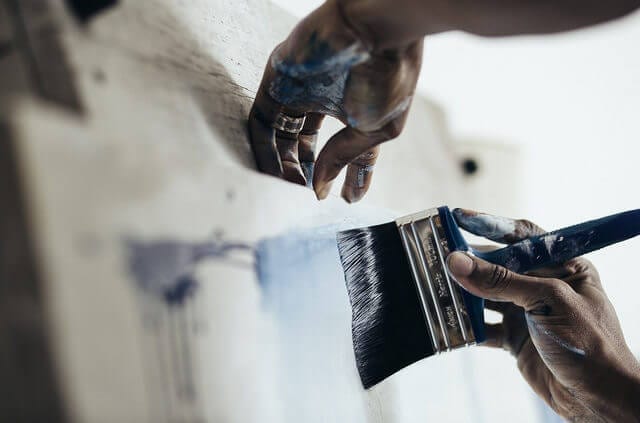5 Tips for Re-Painting Any Room in Your Home
There’s nothing like a freshly-painted room. A new color can transform a space, creating just the mood you’re looking for. Sometimes, though, achieving that perfect look can come with a lot of work. Here are some tips to make your job a little more comfortable.
1. Plan to Succeed
Before the paint goes on the walls, there is a lot of prep work involved. It can be tempting to skip this prep work to get done more quickly, but doing so will only give you a result that you won’t be satisfied with. It’s important to calculate how much paint you’ll need for your room, so you won’t have to rush out and buy more in the middle of your project. Also, make sure you have all the materials you need to protect the surfaces you don’t intend to paint, including drop cloths, painter’s tape, and plenty of rags to quickly clean up any inevitable spills.
2. Give Yourself a Little Space
It can be hard enough to reach every single nook and cranny in your home. It’s even harder when you don’t have enough space to fit your body in to provide plenty of leverage. If at all possible, move furniture out of the room to be painted, rather than just moving it to the center of the room. This way, you’re sure to have plenty of space, and can more easily reach those high and low areas on your walls. Not to mention, paint has this uncanny ability to get on surfaces you don’t want it to be on, even when those surfaces are protected. By moving furniture out, you give yourself greater assurance that it won’t end up with paint on it.
3. Get it Done Quickly
Painting a room is hard work, and it can be tempting to take frequent breaks and spread the project out over a week or more. If at all possible, try to avoid spreading out your project to prevent chipping the paint when you’re moving around with furniture in an unfamiliar configuration. Not to mention, if you leave it for too long, dust could become a problem as it attracts to the new paint surface and is then spread when you’re working in the room.
4. Keep it Feeling Good
Paint drying can be affected depending on the temperature of the air in the room in which it was applied. If it’s too cold, the paint won’t dry as quickly, but if it’s too hot and humid, the extra moisture in the air will slow down the drying as well. Therefore, your HVAC system needs to be in great shape before you begin your painting project to ensure the paint dries quickly and evenly. The faster your paint dries, the sooner you can enjoy the final results of your hard work.
5. Finish it Right
If you’ve finished your painting project and gotten everything moved back in, and then you notice a spot you missed or that has gotten chipped since you painted it, don’t be afraid to correct the issue while you’ve still got all your tools handy. The problem might be in a place that no one else is likely to notice, but for you who put in so much work on the project, you’ll see it every time you’re in the room. Give yourself the satisfaction of a job well done by touching up the paint before you put away your tools.
Enjoy!
When everything is finally done, all that’s left to do is sit back and enjoy the spectacular results. The satisfaction of completing a painting project by yourself is tough to beat, at least until your friends and family see your great work and want you to help them out too.
Sources
http://www.provincialheating.ca/
http://www.diynetwork.com/how-to/skills-and-know-how/painting/painting-prep-the-key-to-success
https://welovepainting.com/interior-painting/




